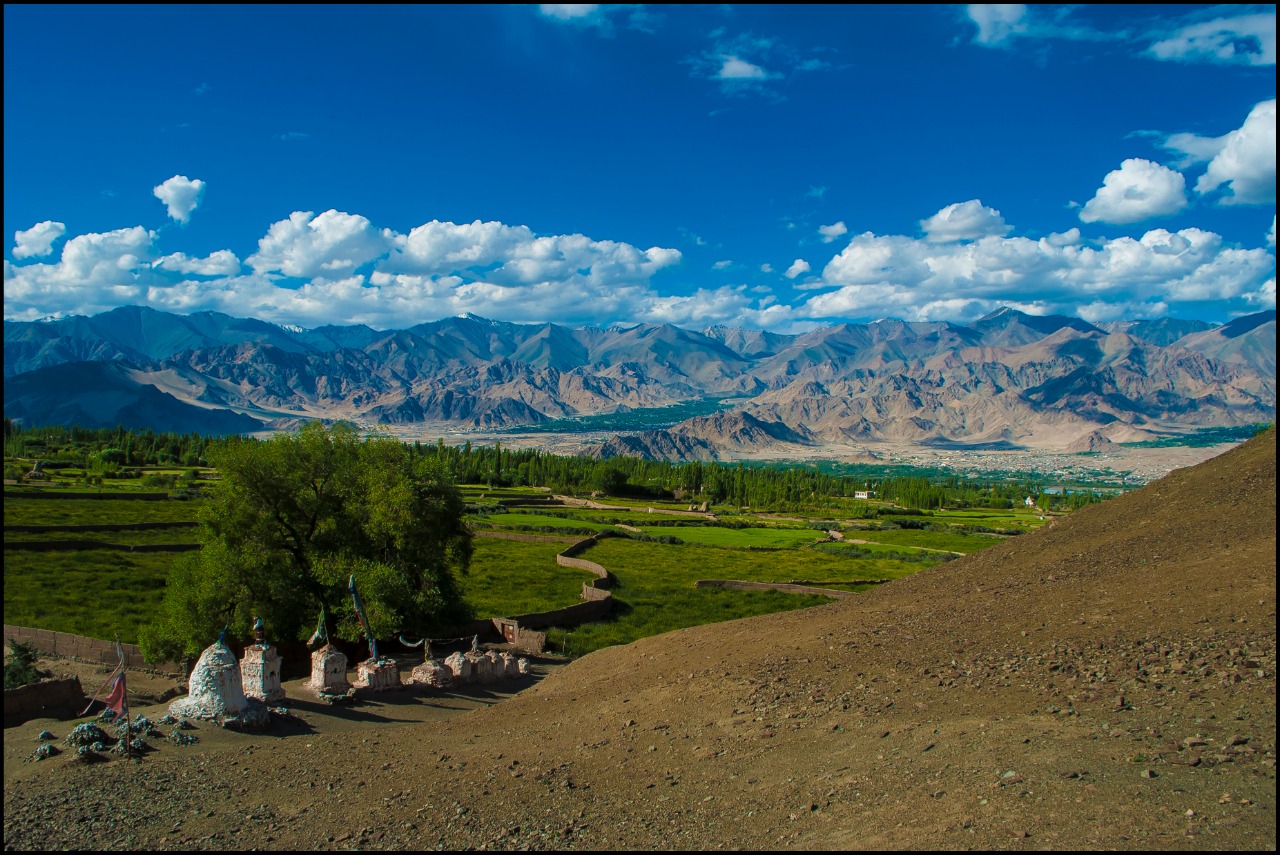All hands on deck for bolder climate action
November 10, 2022

The high mountain desert region of Ladakh is fragile. Its glaciers are receding, leaving communities without adequate water for farming.
Earlier this year in Ladakh, a high mountain desert region of India, I was struck by the commitment and ingenuity of local communities to live sustainable lives. And that got me thinking about the way we live in cities and urban centres. We, the urban settlers, are littering, producing and consuming faster than the earth can support.
Alarm bells have been ringing for a long time. For decades, scientists have been screaming about an impending climate catastrophe if we don’t course correct. Across the world, 2022 has been a year of disasters--flooded cities, scorched crops, and collapsed roads. Millions have been displaced, and millions remain vulnerable.
To preserve a liveable climate and protect our planet, emissions must be reduced by half in this decade and reach net zero soon after. Governments must do the heavy lifting, together with the participation of citizens. Our planet is sending us a distress signal.
Can one person save the planet that is literally on fire?
Local action, global impact
The answer is yes. We can still make a difference.
Innovations, solutions and commitments exist amongst people, communities and in traditional practices in India and across the world.
Let me take you back to Ladakh, which is bordered by the Himalayas. It is places like this that are the ground zero of climate change and climate action.
The region is fragile and under duress. Its glaciers are receding, leaving communities without adequate water for farming. Sonam Wangchuk, an Indian engineer and innovator, designed the ice stupa (shrine), an artificial conical glacier created by piping mountain streams in winter. These stupas, which can reach the height of a ten-storey building, slowly melt in spring and summer providing water for farms.
“My idea was inspired by Ladakhi traditional practices and veteran engineer Chewang Norphel, who had first created an artificial glacier,” said Wangchuk when I met him with Kanni Wignaraja, UNDP’s regional director. Today, 26 such stupas stand tall across Ladakh after the government joined the project in 2019.
This is one of many stories of people-led climate action from India--stories of local communities, young people, women, men and children taking on the responsibility to save our only home, one step at a time.
The people of Ladakh live in harmony with nature, despite having to deal with climate pressures which are leaving them short of water.
India leads the way
Humanity is using the equivalent of 1.6 Earths to maintain our lifestyles. Around two-thirds of global greenhouse gas emissions are linked to private households. Imagine a world where each one of us make mindful choices--waste less, save more, ditch plastic, switch to greener alternatives, support sustainable products, recycle, reuse, and reset.
Recognizing the power of individual actions, the Prime Minister of India, Narendra Modi, last year announced the Lifestyle for Environment movement (LiFE) at the UN Climate Change Conference, COP26 in Glasgow, which made headlines across the world. And last month, the UN Secretary-General António Guterres joined the Prime Minister to launch the campaign in Gujarat, India.
LiFE urges global citizens to take simple, climate-friendly steps to answer the planet’s distress signal. He stressed that the fight against climate change goes beyond just policymaking and needs wider support from people, families and communities.
India has the political will, traditional knowledge, committed communities, mass movements and an innovative ecosystem to drive the climate agenda. I see great enthusiasm and leadership in India--LiFE jan andolan (people’s movement) has gained momentum with young people influencing, advocating and demanding action; solar panels are a common sight; LEDs have replaced energy-intensive bulbs and e-rickshaws ferry people across cities and towns in India.
Be its ambitious climate targets, the renewable revolution, championing international alliances such as the Coalition for Disaster Resilient Infrastructure and International Solar Alliance or joining the High Ambition Coalition for Nature and People to protect and conserve 30 percent of the world’s ecosystems by 2030, India is supporting clean, green lifestyles and inspiring bold climate action.
With COP27 climate negotiations underway in Egypt and India assuming the G20 presidency in December, there is optimism. The G20 accounts for 80 percent of global total emissions and GDP. But they have the resources, the know-how and the influence to end our senseless war against our planet.
Climate solidarity
There are lessons in India’s climate story for the world. The biggest of them all is solidarity--how people and governments are working together to catalyze real change and give our planet a fighting chance.
I believe change is possible because I am witnessing growing climate consciousness and commitment in India’s cities.
Sonam told me there is much that people like us living in a city should learn from communities in Ladakh, who, despite limited resources and harsh living conditions, live in harmony with nature.
Losing to climate crisis is not an option. So, let’s fight together. Are you ready?

 Locations
Locations